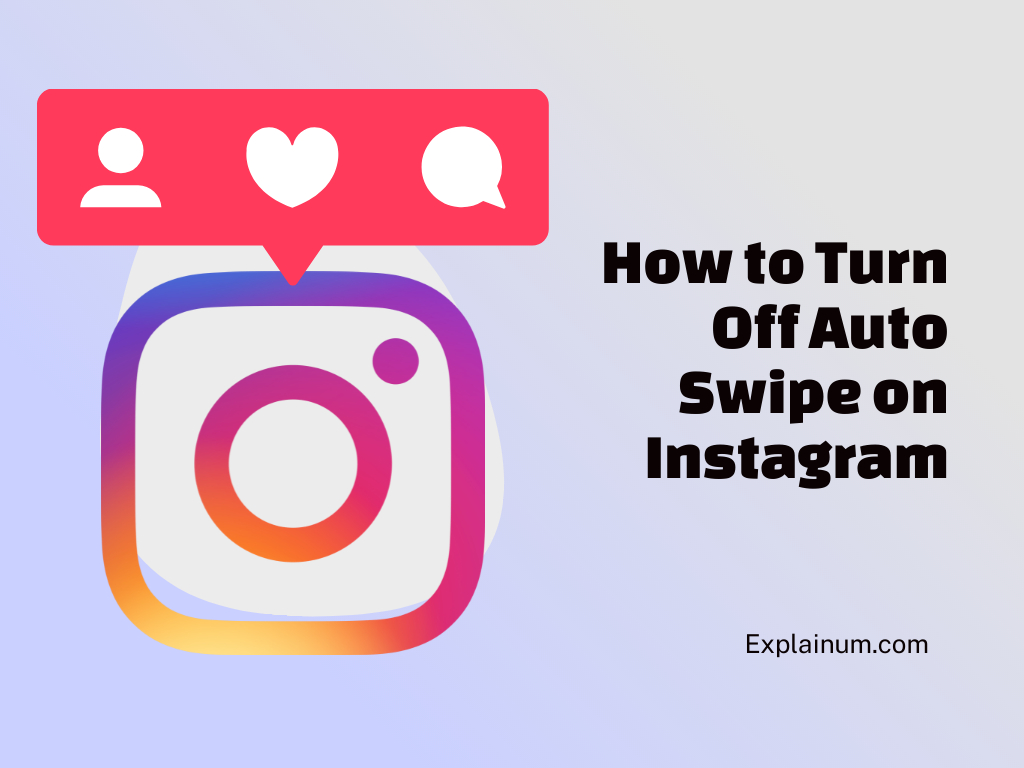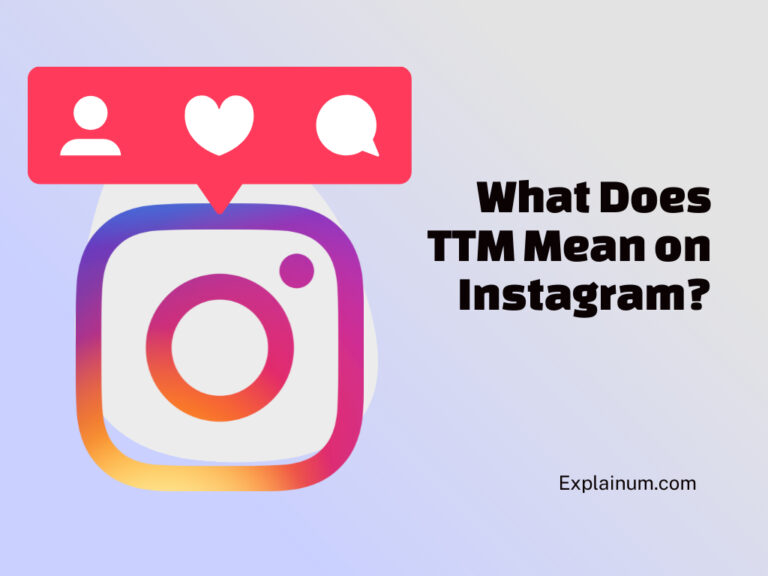How to Turn Off Auto Swipe on Instagram: Regain Control of Your Feed
Instagram’s auto swipe feature was intended to streamline the browsing experience by automatically scrolling through posts. However, this feature may not be everyone’s cup of tea, as it can sometimes whisk away content before one has had the chance to engage with it fully.
Fortunately, Instagram offers options for users to customize their browsing experience, including turning off this auto swipe function.
For those who prefer to take control of their feed and view content at their own pace, disabling auto swipe can enhance their Instagram experience.
This involves a simple adjustment in the app’s settings, which can be performed on a variety of devices.
Dealing with this feature doesn’t require advanced technical knowledge, and with just a few taps, one can ensure their feed behaves just the way they like it.
Key Takeaways
- Disabling auto swipe allows users to manually control their Instagram feed.
- Adjusting settings can be done quickly across various devices.
- Resolving auto swipe issues enhances overall content engagement on Instagram.
Understanding Auto Swipe on Instagram
Instagram continually evolves, introducing features intended to enhance the user’s experience and keep engagement high. Auto Swipe is one such feature, designed to streamline how users interact with content on the platform. Let’s break down the specifics.
What Is Auto Swipe?
Auto Swipe on Instagram is a feature that automatically moves the user through stories or content without the need for manual input. Imagine one’s Instagram feed moving on its own, much like a slide show that progresses without a click.
How Auto Swipe Affects Your Instagram Experience
The presence of Auto Swipe directly influences user experience. Instagram’s algorithm thrives on user engagement; the more time one spends interacting with content, the more personalized their feed becomes.
However, with Auto Swipe, there’s less active engagement, which could have mixed effects.
On one hand, it simplifies consumption for the user who likes to watch without interruptions. On the other hand, it might reduce the chance to engage with content by liking, commenting, or sharing, which are vital for tailoring one’s feed.
Navigating Instagram Settings
To effectively tweak your Instagram experience, one must familiarize themselves with the app’s settings. Here, they’ll gain control over the auto swipe function, ensuring a scrolling experience that suits their preferences.
Accessing the Settings Menu
Once they open Instagram, users should tap on the profile icon at the bottom right to visit their profile.
At the top of the profile, there are three horizontal lines that, when tapped, reveal a menu. This is often referred to as the “hamburger menu.”
Inside, they’ll find the Settings—a gateway to customizing their Instagram interface.
Exploring Swipe Controls
Within the Settings menu, users can explore various options that affect how they interact with the app.
To modify the auto swipe feature, one needs to look for controls related to in-app activity or scroll, often found under a section like ‘Account’ or ‘Preferences’.
While Instagram does not directly offer a toggle to turn off auto swipe, users can indirectly control it by activating Data Saver Mode, which limits auto-play functions and might reduce auto swiping.
Disabling Auto Swipe on Different Devices
Instagram’s auto swipe feature can be quite the hassle for those who prefer to browse at their own pace. Here’s how one can disable this feature across various devices, ensuring a more controlled scrolling experience.
Instructions for iPhone Users
For iPhone users who are finding the automatic advancement of stories or posts a bit too pushy, disabling the auto swipe function involves just a few steps:
- Open Instagram: Launch the Instagram app from the home screen.
- Settings: Tap the profile icon, then the hamburger menu (three horizontal lines), and go to ‘Settings’.
- Account Settings: Within settings, one needs to search for ‘Story controls’ or any relevant updated options to control automatic behaviors.
Note: Due to frequent updates, the exact path may vary, so keeping an eye out for similar terms is advisable.
Guide for Android Smartphone Owners
Android smartphone owners aren’t left out in the dark when it comes to personalizing their Instagram experience. Disabling the auto swipe feature is mostly similar to the iPhone process:
- Access the App: Tap on the Instagram icon to open the app.
- Profile Settings: Tap the profile picture in the bottom right, tap the three horizontal lines, and select ‘Settings’.
- Find the Feature: Look for an option that controls story or post playback, which may be under ‘Account’ or ‘Story settings’.
Android devices can have varied interfaces depending on the manufacturer, so the terms used might be slightly different.
Turning Off Auto Swipe on the Desktop Version
For those who prefer the bigger screen of a desktop computer, Instagram provides a similar, albeit somewhat limited, experience as on mobile. While Instagram’s desktop features are not as extensive:
- Navigate to Instagram’s website and log in.
- As of the current updates, the auto swipe feature is typically controlled within the mobile app rather than on desktop, reflecting Instagram’s mobile-first approach.
Regular checking for updates on the desktop version is recommended as Instagram periodically rolls out new features that may include more control for desktop users.
Troubleshooting Common Auto Swipe Issues
Sometimes, even the flip of a switch can’t seem to tame that pesky auto swipe feature on Instagram. When the usual path to peace doesn’t end with success, it’s time to look at a few tricks up the troubleshooting sleeve.
What to Do If Auto Swipe Won’t Turn Off
First things first, make sure to double-check the steps to disable auto swipe. It’s easy to miss a tap here or there.
If it stubbornly refuses to obey after a thorough check, one should clear the Instagram app’s cache.
For Android users, this can be done by:
- Going to Settings on the phone.
- Tapping on Apps & notifications, then Instagram.
- Selecting Storage & cache, and then tapping on Clear Cache.
iPhone users can try offloading the app, which reinstalls the app without losing any data:
- Head over to Settings.
- Scroll down to General, then iPhone Storage.
- Find Instagram and tap on Offload App.
After performing these steps, attempt to turn off auto swipe again.
Resolving Glitches and Performance Problems
In the event that Instagram is still giving someone the runaround, it might not be an issue with the settings, but a glitch within the app or the device itself. Here are a few helpful tips:
- Restart the device. Sometimes a fresh start is all it takes.
- Ensure that Instagram is updated to the latest version, as updates often fix known bugs.
- If the problem persists, reach out to Instagram support through their help center. They offer a live chat service that can be particularly handy.
- As a last resort, uninstalling and reinstalling the app can often iron out any lingering wrinkles in performance.
When interacting with support or following any troubleshooting steps, it’s important to be patient and precise—help is always most effective when they know exactly what’s going wrong.
Enhancing Your Instagram Browsing Experience
Instagram offers a range of settings that empower users to tailor their experience on the platform. From carefully curating the content appearing in one’s feed to fostering more meaningful interactions, making conscious choices can significantly enhance one’s browsing experience.
Customizing Your Feed Preferences
One of the first steps to a tailored Instagram experience is to customize one’s feed preferences.
By prioritizing content from favored accounts, whether it’s friends, family, influencers, or brands, users can ensure a more personal and relevant feed.
This involves actively engaging with posts by utilizing likes and comments, as Instagram’s algorithm often interprets such interactions as interest, subsequently displaying similar content.
Users can also:
- Personalize Stories: By holding down on an Instagram story, one can mute content from any account that doesn’t align with their interests.
- Choose Videos and Reels: Exercising preferences by skipping or watching entire videos influences the type of video content Instagram will serve up in the future.
Mindful Content Interaction
Engaging with Instagram content should be more than just a reflex; it’s about making conscious choices. Here are ways to create meaningful interactions:
- Rather than auto-swiping, take the time to engage with content that resonates, thereby informing Instagram of the type of content that one wishes to see.
- For a less distracting experience, users may opt to turn off the auto-swipe feature by locating it in the ‘Advanced Settings’ and toggling it off.
- This allows for deliberate scrolling and the opportunity to interact with content at one’s own pace.
By setting these personalized preferences and engaging mindfully, Instagram users can significantly enhance the quality of their browsing experience.







